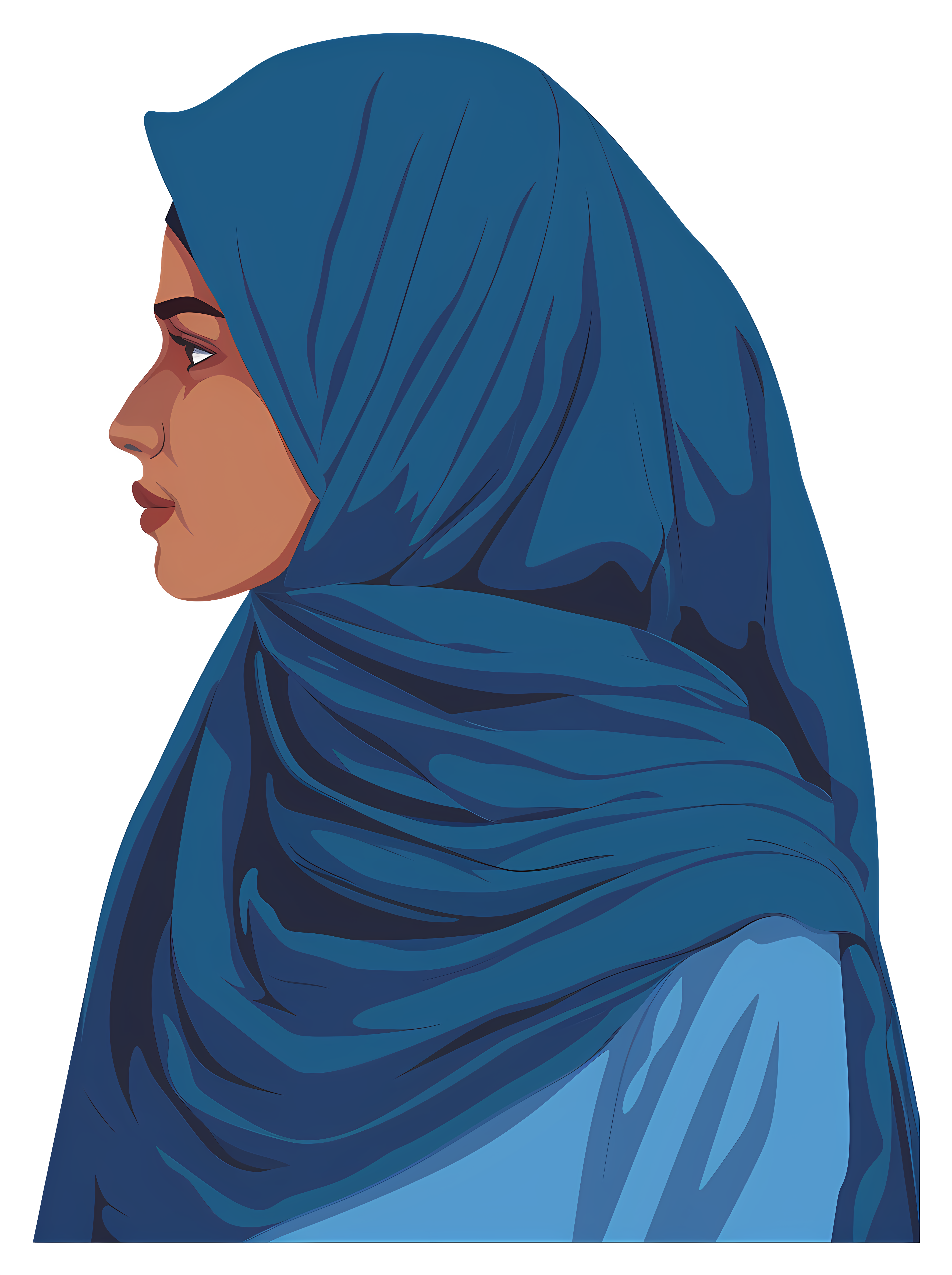
This image has format transparent PNG with resolution 3540x4740.
You can download this image in best resolution from this page and use it for design and web design.
Hijab PNG with transparent background you can download for free, just click on download button.
In modern usage, hijab (Arabic: حجاب, romanized: ḥijāb, pronounced [ħɪˈdʒaːb]) refers to head coverings worn by Muslim women. Similar to the mitpaḥat/tichel or snood worn by religious married Jewish women, certain headcoverings worn by some Christian women, such as the hanging veil, apostolnik and kapp, and the dupatta favored by many Hindu and Sikh women, the hijab comes in various forms.
The term describes a scarf that is wrapped around the head, covering the hair, neck, and ears while leaving the face visible. The use of the hijab has grown globally since the 1970s, with many Muslims viewing it as a symbol of modesty and faith; it is also worn as a form of adornment. There is consensus among Islamic religious scholars that covering the head is required. In practice, most Muslim women choose to wear it.
The term ḥijāb was originally used to denote a partition and was sometimes used for Islamic rules of modesty. In the verses of the Qur'an, the term sometimes refers to a curtain separating visitors to Muhammad's main house from his wives' lodgings. This has led some revisionists to claim that the mandate of the Qur'an applied only to the wives of Muhammad and not to all women. Another interpretation can also refer to the seclusion of women from men in the public sphere, whereas a metaphysical dimension may refer to "the veil which separates man, or the world, from God". The Qur'an never uses the word hijab (lit. 'barrier') to refer to women's clothing, but rather discusses the attire of women using other terms Jilbāb and khimār (generic headscarf).
There is variation in interpretations regarding the extent of covering required. Some legal systems accept the hijab as an order to cover everything except the face and hands, whilst others accept it as an order to cover the whole body, including the face and hands, via niqab. These guidelines are found in texts of hadith and fiqh developed after the revelation of the Qur'an. Some state that these guidelines are aligned with Qur'anic verses (ayahs) about hijab, while others interpret them differently with various conclusions on the extent of the mandate.
Islamic veiling practices vary globally based on local laws and customs. In some regions, the hijab is mandated by law, while in others, its use is subject to restrictions or bans in both Europe and some Muslim countries. Additionally, women face informal pressure regarding their choice to wear or not wear the hijab. Muslim women often face heightened discrimination particularly in workplaces, a trend intensified after the rise of Islamophobia post-9/11. Hijab-wearing women face overt and covert prejudice, with covert bias often leading to hostile treatment. Studies show perceived discrimination can harm well-being but is often overcome by religious pride and community, with hijab-wearing women finding strength and belonging.
In this page you can download free PNG images: Hijab PNG images free download